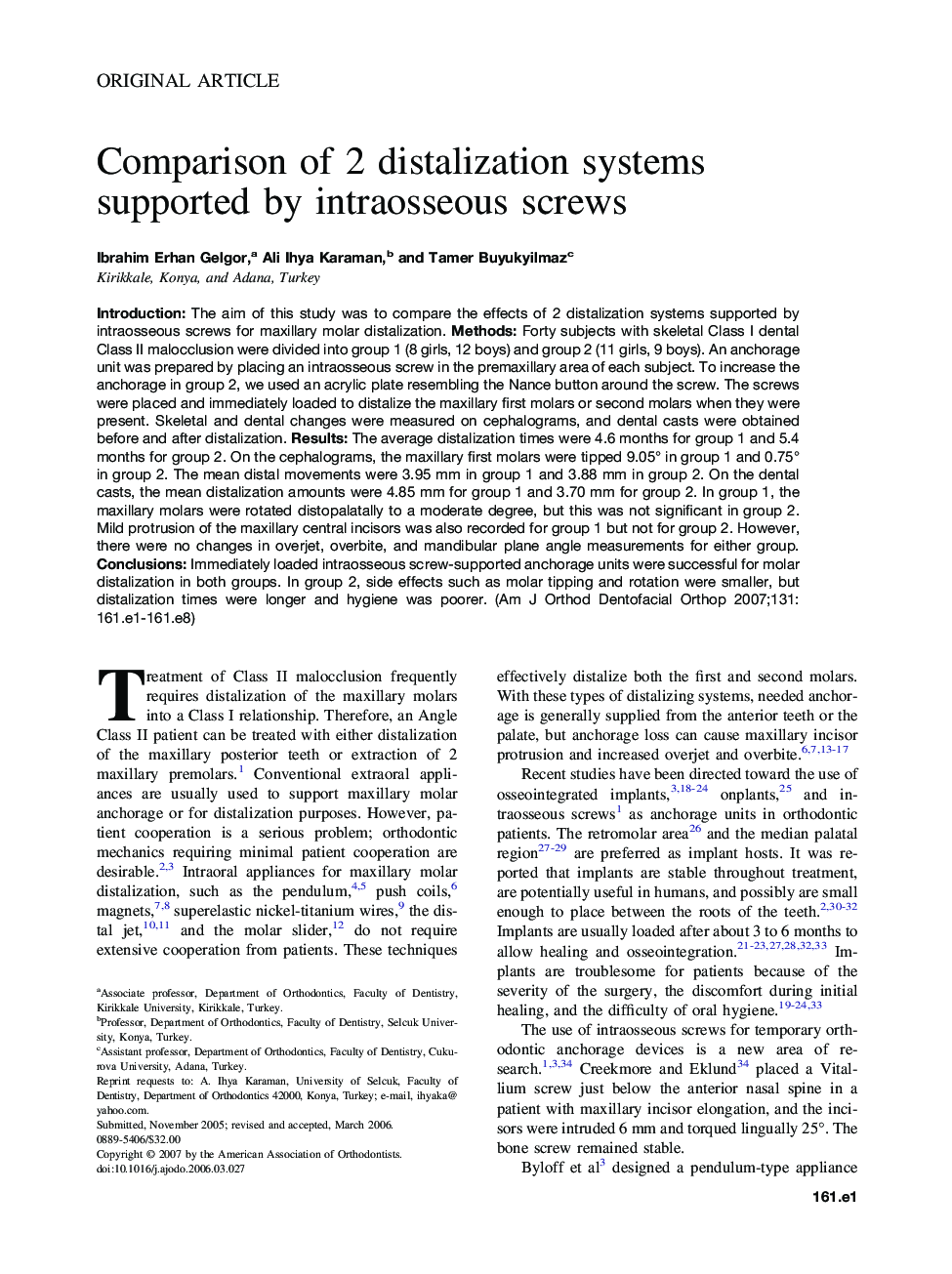| کد مقاله | کد نشریه | سال انتشار | مقاله انگلیسی | نسخه تمام متن |
|---|---|---|---|---|
| 3119295 | 1582797 | 2007 | 8 صفحه PDF | دانلود رایگان |
عنوان انگلیسی مقاله ISI
Comparison of 2 distalization systems supported by intraosseous screws
دانلود مقاله + سفارش ترجمه
دانلود مقاله ISI انگلیسی
رایگان برای ایرانیان
موضوعات مرتبط
علوم پزشکی و سلامت
پزشکی و دندانپزشکی
دندانپزشکی، جراحی دهان و پزشکی
پیش نمایش صفحه اول مقاله

چکیده انگلیسی
Introduction: The aim of this study was to compare the effects of 2 distalization systems supported by intraosseous screws for maxillary molar distalization. Methods: Forty subjects with skeletal Class I dental Class II malocclusion were divided into group 1 (8 girls, 12 boys) and group 2 (11 girls, 9 boys). An anchorage unit was prepared by placing an intraosseous screw in the premaxillary area of each subject. To increase the anchorage in group 2, we used an acrylic plate resembling the Nance button around the screw. The screws were placed and immediately loaded to distalize the maxillary first molars or second molars when they were present. Skeletal and dental changes were measured on cephalograms, and dental casts were obtained before and after distalization. Results: The average distalization times were 4.6 months for group 1 and 5.4 months for group 2. On the cephalograms, the maxillary first molars were tipped 9.05° in group 1 and 0.75° in group 2. The mean distal movements were 3.95 mm in group 1 and 3.88 mm in group 2. On the dental casts, the mean distalization amounts were 4.85 mm for group 1 and 3.70 mm for group 2. In group 1, the maxillary molars were rotated distopalatally to a moderate degree, but this was not significant in group 2. Mild protrusion of the maxillary central incisors was also recorded for group 1 but not for group 2. However, there were no changes in overjet, overbite, and mandibular plane angle measurements for either group. Conclusions: Immediately loaded intraosseous screw-supported anchorage units were successful for molar distalization in both groups. In group 2, side effects such as molar tipping and rotation were smaller, but distalization times were longer and hygiene was poorer.
ناشر
Database: Elsevier - ScienceDirect (ساینس دایرکت)
Journal: American Journal of Orthodontics and Dentofacial Orthopedics - Volume 131, Issue 2, February 2007, Pages 161.e1-161.e8
Journal: American Journal of Orthodontics and Dentofacial Orthopedics - Volume 131, Issue 2, February 2007, Pages 161.e1-161.e8
نویسندگان
Ibrahim Erhan Gelgor, Ali Ihya Karaman, Tamer Buyukyilmaz,